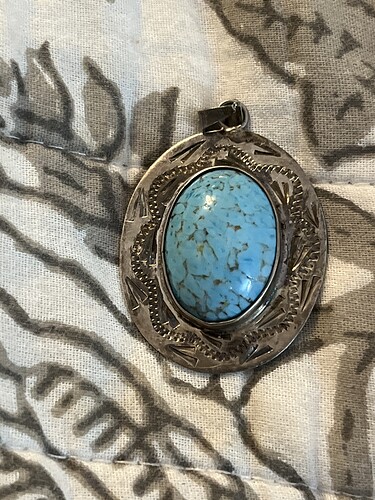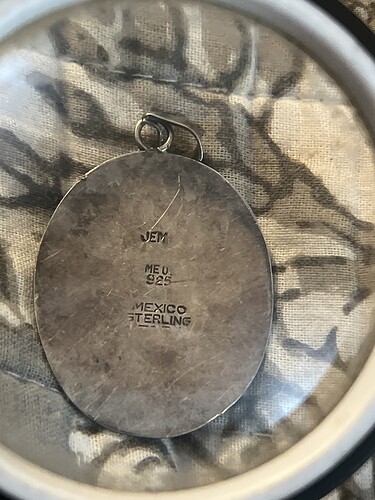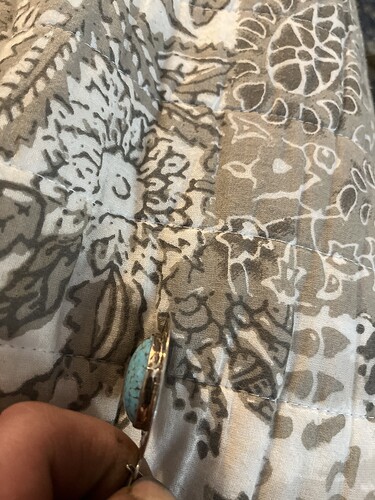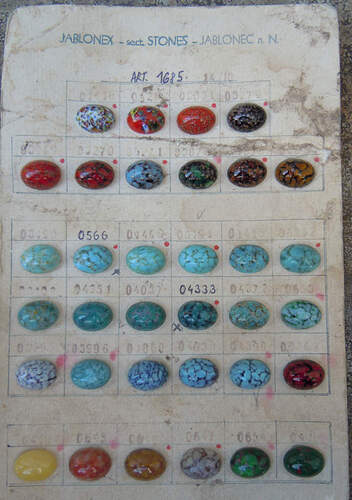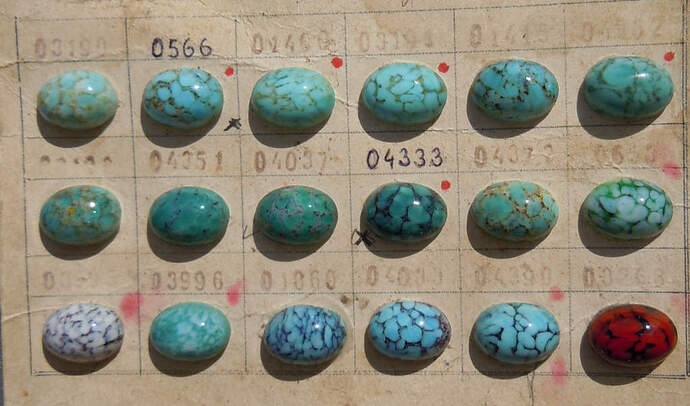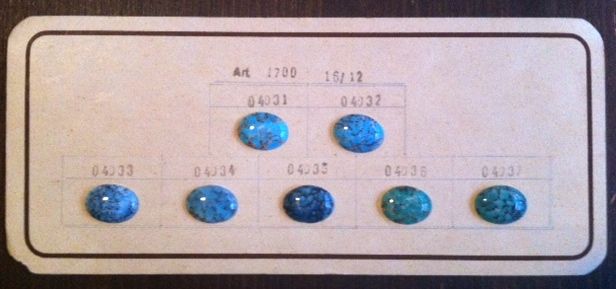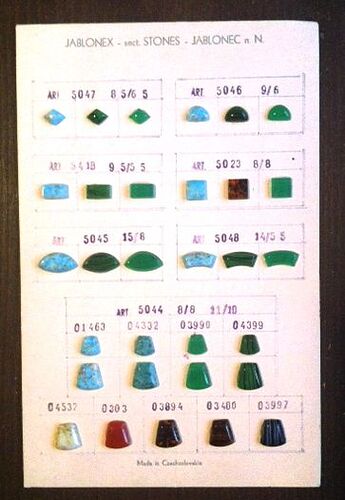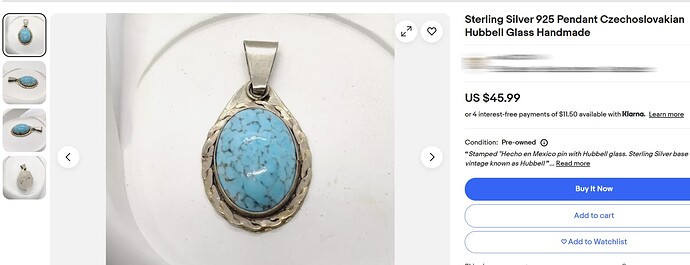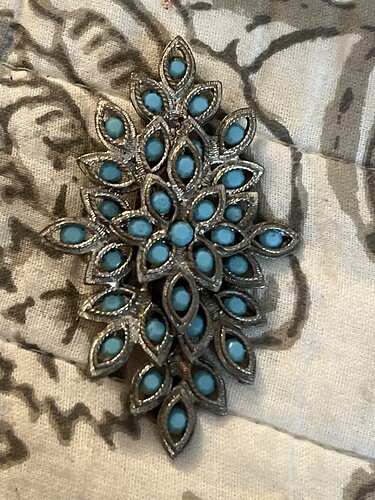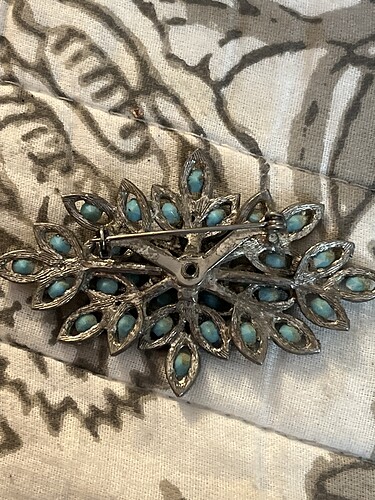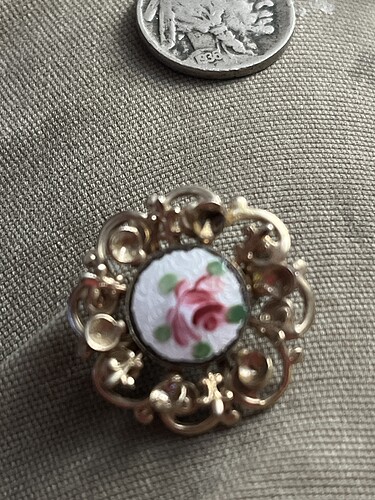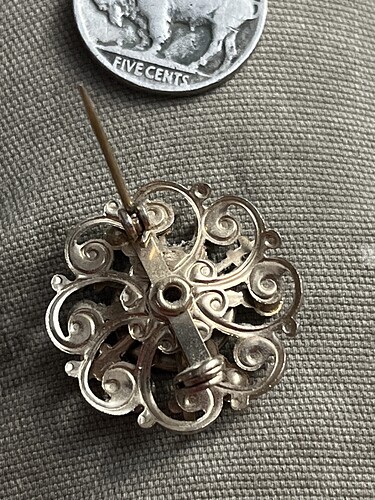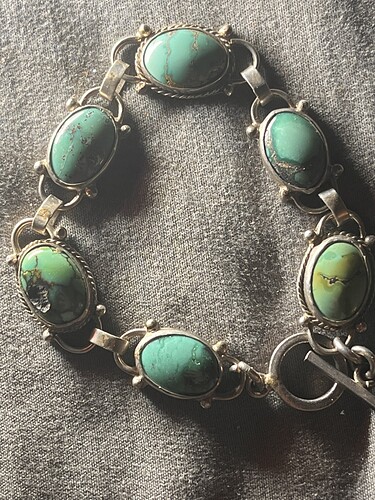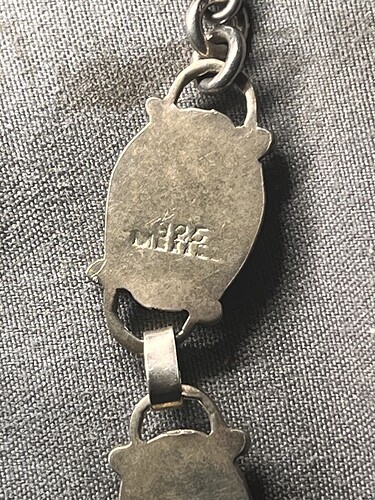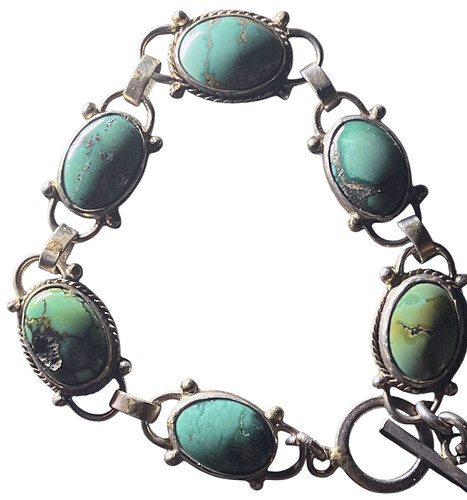Stamp says Mexico on the back, so I’m assuming it’s Mexican made. I don’t think that is actually turquoise.
correct, Mexico, glass stone.
Why put glass stone on sterling? Also I was told Mexican sterling was 950? This is 925. It is very old. I have a bracelet as well and the black in the stone looks like it is almost rotting out
Maybe because the artist liked it, and/or didn’t have turquoise. And this is not a Native American piece; it clearly has a stamp that says Mexico. And I’m not sure what you mean by “very old.”
Mexican silver often has the 925 mark. Native American Jewelry usually is stamped “sterling.”
Well it was my grandmothers and she would be well over 100 and I don’t know if she got it as a kid or passed down or if she got it 30 years ago? I know nothing about it except it was important to her and it was left to me in a will
Steve thank you for this I definitely think it it similar to one of the pieces with a seek red dot next to it. It looks like it had gold color veins in it at one point
any pictures of this piece?
So who is to say this Native American Hubble bead was not made by a Native American in the southwest and mounted it on a Mexican silver setting? Or it was traded with a person from Mexico and they put on Mexican sterling?
As far as how old I mean I just did a little research and Hubble beads have been around for a long time 1900’s actually so it could be old. Probably not but I can’t say it is or is not.
I don’t believe the bead in your piece is a Hubbell bead, but it could very well be a bead made in Europe, similar to what was used by the Hubbell Trading Post. The article states that these beads were made in European countries; they are not Native American made. Yes, some Native Americans used them - so did artists from other countries. A silver piece with a Mexico stamp is not considered Native American made. There’s nothing wrong with jewelry made in Mexico, and it’s wonderful that you inherited it from your grandmother.
If you Google search Mexican sterling jewelry with glass beads you might find something similar to yours.
Hubbell beads were from Europe and not made by Native Americans, like other glass beads. They remained available to jewelers for decades into the mid-20th c, including being set in Mexican jewelry. The pendant was made in Mexico. Hopefully these are the answers you need.
This is a costume pin. Mid-century vintage.
The bracelet looks to have soft turquoise. It will tend to break apart with wear and knocking around. Post it here so others more knowledgable can comment on age, etc. Japanese silver is typically 950. Mexican varies.
turquoise looks legit.
the black in the stone rotting out as you described is the matrix or host rock that the turquoise was formed in.
possible sources
Campitos Mine (Sonora):
This mine, located outside of Cananea, is a major source of Sonoran turquoise, known for its unique mining method where turquoise is often found as nuggets in clay deposits rather than veins.
Sonoran Turquoise:
This type of turquoise is characterized by its unique mining method and the colors it produces, ranging from blue to green, with varying amounts of matrix.
Other Mexican Turquoise Regions:
While the Campitos mine is prominent, other areas in Mexico, such as the Ensenada area along the northern coast of Baja Mexico, have also yielded turquoise.
Evans Mine (Baja Mexico):
The Evans Mine, located in the Ensenada area, is known for producing a wide variety of turquoise.
Concur with @StevesTrail. Looks like low-grade, stabilized. I think the black recessed part in the stone at lower left is damage to the stone.
